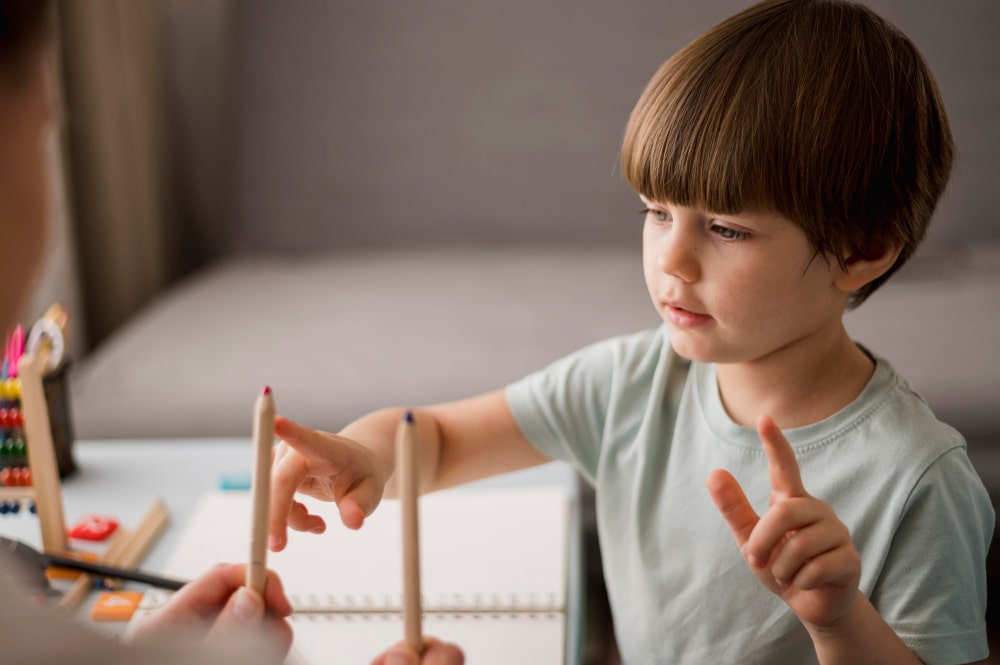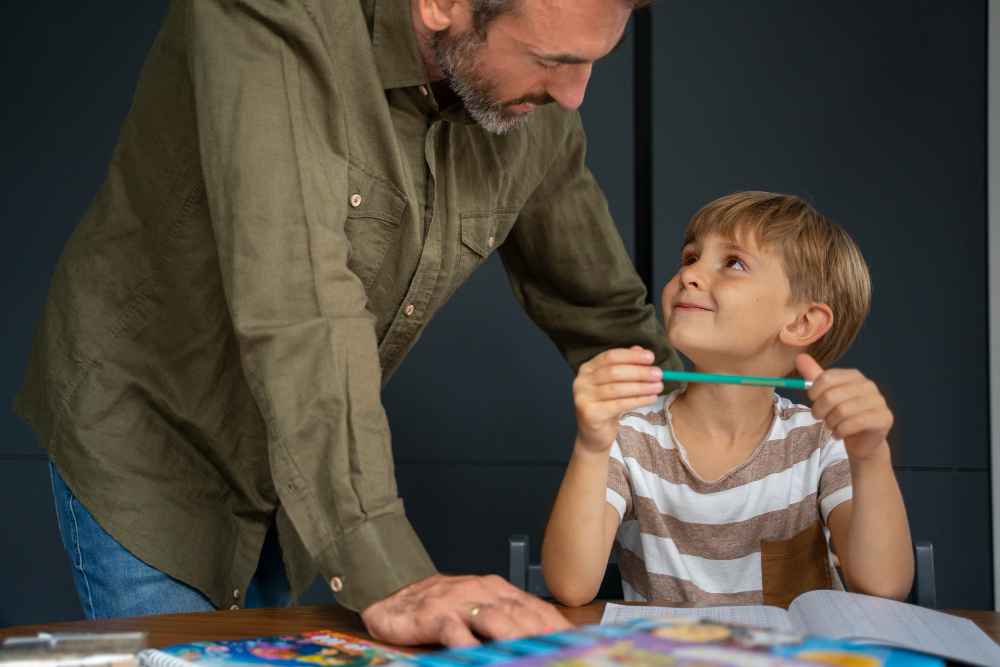
When it comes to raising children, discipline is an essential aspect of their development. It sets boundaries, teaches them responsibility, and helps create a well-behaved child. But finding the right discipline strategies can be challenging for parents. I saw this firsthand when my daughter was a toddler.
Her tantrums and behavior were out of control, and I didn’t know how to handle it. After researching and consulting with experts, I found some easy and practical discipline strategies. In this guide, I will share them with you.
Why do I need to teach my child discipline?
Disciplining a child is an essential part of their development and growth. As parents, it is our responsibility to guide and teach our children how to behave appropriately. Discipline helps children learn self-control, respect for authority, and acceptable behavior in society. It also sets boundaries and teaches them the difference between right and wrong. Here are some reasons why it is crucial to teach your child discipline:
- Promotes Responsibility
- Builds Character
- Fosters Respect and Empathy
- Establishes Boundaries
- Teaches Self-Control
- Encourages Healthy Relationships
- Sets Them Up for Success
Read More: How to Teach Responsibility to Kids: A Guide for Parents
Easy Discipline Strategies for Children
Positive Reinforcement

My first tip for effective discipline is to use positive reinforcement. This means praising and rewarding your child when they exhibit good behavior. Positive reinforcement can be verbal, such as saying “Great job!” or physical, like giving a high five or a sticker.
Positive reinforcement helps reinforce good behavior and encourages children to continue it. It also boosts their self-esteem and creates a positive relationship between parent and child. It’s important to be specific when using positive reinforcement, so your child knows exactly what they did well. For example, instead of saying “Good job,” you could say something like, “I’m really proud of how you shared your toys with your friends.”
Consistency is Key

Maintaining consistency is essential when disciplining your child.. It’s important to establish clear expectations and consequences for both good and bad behavior. When your child knows what to expect, it can help prevent misbehavior and create a sense of security.
Consistency also applies to how you react to their behavior. If you respond differently every time, your child may become confused and not understand the appropriate way to behave. It’s important to stay calm and consistent in your responses, even if it can be challenging at times. This will help your child learn what behaviors are acceptable and which ones are not.
Lead by Example

Children often imitate the actions and behaviors of their parents or caregivers. Therefore, it’s important to lead by example and model positive behaviors for your child. If you want your child to be kind, respectful, and responsible, then demonstrate those traits yourself.
This will not only teach your child how to behave but also strengthen the bond between you. Showing your child how to handle difficult situations calmly and positively can also help them learn how to manage their emotions in a healthy way.
Encourage Independence

As children grow and develop, they need to become more independent. This includes tasks such as getting dressed, tying their shoes, and completing homework on their own. Encouraging independence not only teaches your child valuable life skills but also boosts their self-confidence.
However, it’s important to provide support and guidance when needed and avoid being too controlling or critical of your child’s efforts. I remember my parents always encouraged me to do things on my own, but they were there to help if I needed it. This allowed me to develop a strong sense of independence and self-sufficiency.
One way to promote independence in your child is by allowing them to make their own decisions, within reason. This can include choosing what clothes to wear, which extracurricular activities to participate in, or what hobbies they want to pursue.
Set Clear Rules and Expectations
The next way to build discipline in your child is by setting clear rules and expectations. It clearly defines what is acceptable behavior and what is not. Make sure to involve your child in the process of creating these rules, as it will help them understand why they are important.
For example, if you want your child to clean up their room before bedtime, explain to them why it’s important. Not only does this teach them responsibility and organization skills, but it also helps them understand the consequences of not following rules. By involving your child in the rule-making process, they will feel a sense of ownership and be more likely to follow them.
Teach Problem-Solving Skills
My last practical discipline strategy is to teach problem-solving skills. This skill is essential for children to learn as they navigate through life and face various challenges. Encourage your child to think about problems and find solutions on their own. This will not only help them feel more independent but also build their confidence in handling difficult situations.
One way to teach problem-solving skills is by using the “Five W’s and One H” method. This method encourages children to think of who, what, when, where, why, and how when faced with a problem. By answering these questions, they can break down the problem into smaller parts and come up with a solution step by step.
Another helpful strategy is role-playing. Create scenarios that your child may encounter in real life and have them act out how they would respond. This activity allows children to practice problem-solving skills
When they encounter a problem, instead of giving them the solution right away, ask them questions that can lead them to solve it themselves. This will help develop their critical thinking and decision-making skills.
My Experience in Developing Discipline Skills
During my time as a parent, I have found that using positive reinforcement is an effective method to develop discipline in children. Positive reinforcement involves praising and rewarding good behavior, rather than focusing on punishment for bad behavior.
I have also learned the importance of consistency in discipline. Children thrive on structure and routine, so it is important to set clear expectations and consequences for their actions and consistently follow through with them.
Another aspect of discipline that I have found crucial is communication. It is important to communicate with children about rules and expectations calmly and respectfully. By involving children in the decision-making process, they are more likely to understand and accept the rules, rather than just being told what to do.
Overall, discipline should be seen as a positive and necessary part of parenting. It is not about punishment, but rather about teaching and guiding children towards positive behaviors. And as with any aspect of parenting, consistency is key.
Final Words About Easy Discipline Strategies for Kids
Disciplining children can be a difficult and emotional task, but it is an important part of guiding them towards becoming responsible and well-behaved individuals. With these easy discipline strategies, you can create a positive and respectful environment for your child to thrive in.
Always communicate with your child, involve them in the decision-making process, and be consistent with consequences. With time and patience, you will see the positive effects of using effective disciplinary techniques on your child’s behavior.
And most importantly, don’t forget to show love and support throughout the journey of disciplining your child. Together, you can build a strong foundation for their future success.
Frequently Asked Questions
How can I help my child develop positive behavior?
Consistently praise and reward positive actions to reinforce good behavior. Setting clear expectations and being a role model for the behavior you want to see can make a big difference.
What is the best way to handle tantrums?
Stay calm and composed, avoiding shouting or reacting impulsively. Give your child space to calm down and address their needs through open communication once they are ready.
How can I improve communication with my child?
Make time to talk daily, actively listen to their thoughts, and validate their feelings. Focus on using positive language and steer clear of criticism or judgment. Show interest in their interests and encourage open communication. Also, consider having regular family meetings to discuss any issues or concerns.